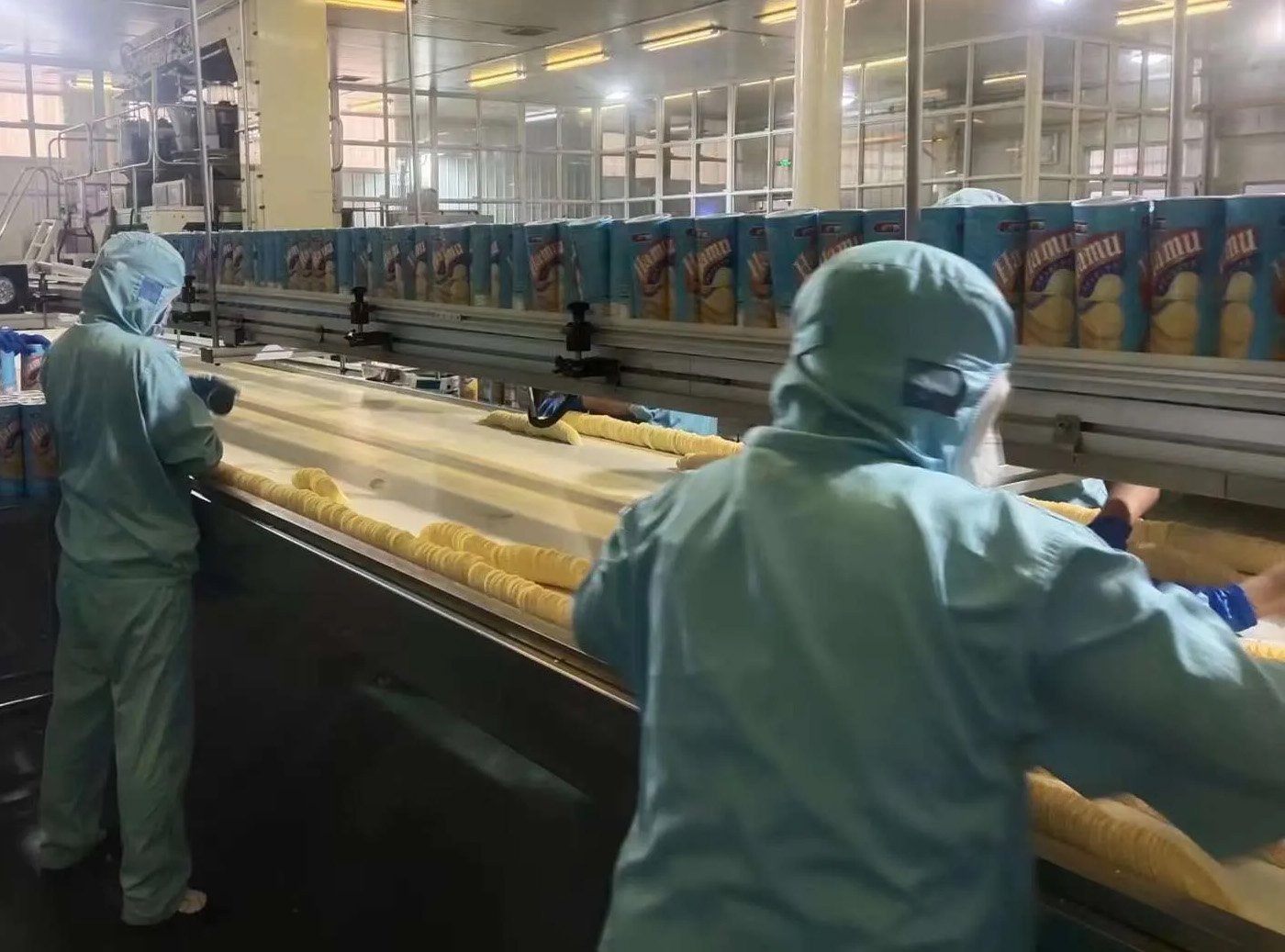Original Sliced Potato Chips are a favorite snack among many people. They’re a crunchy and original delicious treat that you can enjoy with your family or friends. The potato chip manufacturing and selling industry is big business as well, and there is plenty of information to learn about it. Do you want to learn, How sliced potato chips are made? To help you get started in the world of potato chips, we’ve compiled some great facts about this popular snack food for you.
There are a lot of factories manufacturing sliced potato chips and there is a small difference in production machines used in manufacturing potato chips. Jojose Foods’ potato manufacturing factory is using the most advanced production machines to manufacture potato chips.
Jojos is using advanced technology because they want to provide high-quality assurance to its clients.
- Potatoes, oil, and seasoning
- Raw potatoes
- Washing and peeling potatoes
- Cutting the potatoes into chips
- Blanching
- Drying potato slices
- Oil preparation and frying
- Cooling and de-oiling potato chips
- Seasoning and packaging
Potatoes, Oil, and Seasoning
Potatoes, oil, and seasoning are the three main ingredients that go into making potato chips.
These are the basis for all chips. They’re first cooked and then peeled to remove their outer skin. Afterward, they’re mashed and processed until they become a thick paste that can be shaped into chips.
The oil is what makes the chips crispy when they’re fried. It’s also what provides a delicious taste when combined with seasonings like salt or garlic powder.
Raw Potatoes
Potatoes are a staple in the world of potato chips. They’re used as a thickener, they help with the texture of the final product, and they’re also an important part of the process.
In order to make good quality potato chips, you need to have high-quality potatoes that are free from defects like sprouts or cracks. The best way to ensure this is by using raw potatoes instead of cooked ones.
Raw potatoes contain enzymes that break down starch into sugars during cooking; this helps give them their crunchy texture when fried or baked. Raw potatoes also have higher water content than cooked ones do–which means they’ll absorb more oil during frying or baking!
Washing and Peeling Potatoes
Washing and peeling potatoes in the potato chips-making industry
Theese are most important steps in the potato chip manufacturing process. These steps are performed to remove dirt and other impurities from the potatoes before they’re dried. It is necessary for the next step of frying them.
Washing potatoes can be done by hand or with a machine. A machine known as a peeler can be used to peel large amounts of potatoes at once. Hand-peeling will take longer but will produce better results.
Once peeled, potatoes should be rinsed in cold water before being dried out at room temperature or in an oven set at 120 degrees Fahrenheit (50 degrees Celsius). Once dried out completely, they can then be fried in oil until golden brown. Before being packaged up into bags or boxes ready for sale at grocery stores across America!
Cutting the Potatoes into Chips
In the potato chip industry, it’s all about making sure that the potatoes are cut into chips in a uniform manner. The first step in this process is to cut the potatoes into small pieces. This can be done with a knife or by using a potato cutter machine.
After you’ve cut your potatoes into small pieces, you need to soak them in water for about 10 minutes so that they can absorb some of the moisture from their skins. This will help prevent them from burning when you cook them later on!
Next up is placing the pieces of potato into an oiled pan and heating it up over medium-high heat until they begin to brown slightly (about 30 seconds). Then turn off the burner and let them sit in there while they cool off for another minute or two before transferring them onto paper towels (or whatever kind).
Blanching
The blanching process is an important step in potato chip making. It’s used to remove the skin from potatoes and make sure that the chips are crisp and crunchy.
The blanching process involves submerging the potatoes in boiling water for a short amount of time, then plunging them into ice water to stop the cooking process. This helps eliminate natural sugars from the potato so that it will be less likely to cause your mouth to burn while you eat it.
Drying Potato Slices
After blanching, the potatoes are dried in an oven for about 15 minutes at a temperature of about 300 degrees Fahrenheit. The potatoes are then put into hot water for about 10 minutes, which allows them to release some of their water content so that they can be more easily processed into chips by being sifted through screens or by being pressed through rollers.
Oil Preparation and Frying
Potato chips are one of the most popular snacks in the world. They’re delicious, easy to make, and can be eaten at any time of day.
Potato chips are made from potatoes that have been peeled and sliced into thin slices. These slices are then dried in a hot oven until they become brittle. The dried potato slices are then crushed into small pieces using a crusher or grater. After this, they are put through a machine that grinds them into flakes. Then further processed into chips by passing through an extruder with hot oil at high pressure (up to 350 degrees F).
The process for making potato chips is similar to that of other fried products such as French fries and doughnuts. First, the raw product must be prepared by washing or peeling off any dirt or debris from its surface. It must be cooked until it’s done; finally, it must be cooled before packaging so that it stays fresh for shipping or sale elsewhere (such as at restaurants).
Cooling and De-oiling Potato Chips
Cooling and de-oiling potato chips after cooking in the potato chips-making industry is an important process. The first step of cooling and de-oiling is to remove the potato chips from the oil. This can be done by using a skimmer or a spoon. The next step is to place the oil in a pan that has been cleaned with detergent, then pour it over the potatoes.
After this, you need to wait for about 20 minutes until you see that the oil has become cold. Then, you can remove them from the pan with your hands or a spoon, dry them off quickly with paper towels, and put them back into the container where they were cooked previously (if there was one). Next comes the de-oiling part: You need to pour some vegetable oil over everything so that all surfaces are covered evenly by about 1-inch thick layers of vegetable oil at least 3 times over each layer of potatoes (you may need more depending on how many layers there are). Then put all containers back into their original places inside your refrigerator where they will stay until they’re ready for use again sometime later on down the road!
Seasoning and Packaging
It is a very important process because it helps to ensure the quality of the product. It also helps to maintain the texture of the chip, which is important for consumers. When you buy potato chips, you want them to have a good taste and smell. The seasoning process helps to make sure that this happens by adding salt and other ingredients like spices or herbs into the oil used during frying. It also helps to keep the chips fresh longer by keeping them away from oxygen. It’s important While they are being cooked or fried at high temperatures (e2).
The next step after seasoning is the packaging. Because it allows companies to sell their products easily without having too much waste left over after production has finished. Packaging should be attractive and unique so it can have more visibility on the shelf. If you want to check the Jojose packaging then visit the products page of the Jojose Foods website.




